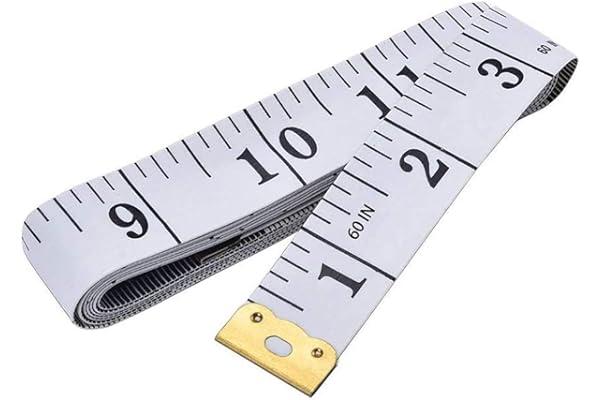Best Selling Sewing Tape Measures
Sewing tape measures are an essential tool for any sewist, from beginner to expert. They are used to measure fabric, take body measurements, and mark seam allowances. There are many different types of sewing tape measures available, each with its own advantages and disadvantages.
Links to Best Selling Sewing Tape Measures
Types of Sewing Tape Measures
Sewing tape measures come in a variety of shapes and sizes. The most common type is the flexible tape measure, which is made of a thin, pliable material that can be stretched around curves. Flexible tape measures are available in a variety of lengths, from 18 inches to 60 inches. They are typically made of nylon or polyester, and some models are coated with a water-resistant material to prevent them from fraying.
Another type of sewing tape measure is the rigid tape measure. Rigid tape measures are made of a stiff material, such as plastic or metal. They are typically shorter than flexible tape measures, ranging from 6 inches to 12 inches. Rigid tape measures are often used for taking body measurements, as they can be more easily held in place.
In addition to flexible and rigid tape measures, there are also a number of other types of sewing tape measures available, including:
- Self-adhesive tape measures
- Retractable tape measures
- Waterproof tape measures
- Inches and centimeters tape measures
- Metric tape measures
Choosing a Sewing Tape Measure
When choosing a sewing tape measure, there are a few factors you should consider, including:
- Length
- Material
- Accuracy
- Price
The length of the tape measure is important to consider, as you will need to choose a length that is long enough for your needs. If you plan on using the tape measure for taking body measurements, you will need a longer tape measure than if you only plan on using it for measuring fabric.
The material of the tape measure is also important to consider, as you want a tape measure that is durable and will not fray or stretch. Flexible tape measures are typically made of nylon or polyester, while rigid tape measures are typically made of plastic or metal.
The accuracy of the tape measure is also important, as you want a tape measure that will give you accurate measurements. Most sewing tape measures are accurate to within 1/8 inch.
Finally, you will need to consider the price of the tape measure. Sewing tape measures can range in price from a few dollars to over $100. The price of the tape measure will depend on the length, material, and accuracy.
Using a Sewing Tape Measure
Using a sewing tape measure is relatively straightforward. To take a measurement, simply hold the tape measure against the object you are measuring and align the zero mark with one end of the object. Then, stretch the tape measure until it reaches the other end of the object and read the measurement.
Here are a few tips for using a sewing tape measure:
- Make sure the tape measure is flat against the object you are measuring.
- Do not stretch the tape measure too tightly, as this can lead to inaccurate measurements.
- Read the measurement at the end of the tape measure, not the middle.
Storage
Once you are finished using a sewing tape measure, it is important to store it properly to prevent it from getting damaged. The best way to store a sewing tape measure is to roll it up and place it in a drawer or on a shelf. You can also use a tape measure holder to keep your tape measures organized.
Conclusion
Sewing tape measures are an essential tool for any sewist. They are available in a variety of shapes, sizes, and materials, so you can choose the one that is best for your needs. By following the tips in this article, you can learn how to choose and use a sewing tape measure properly.
